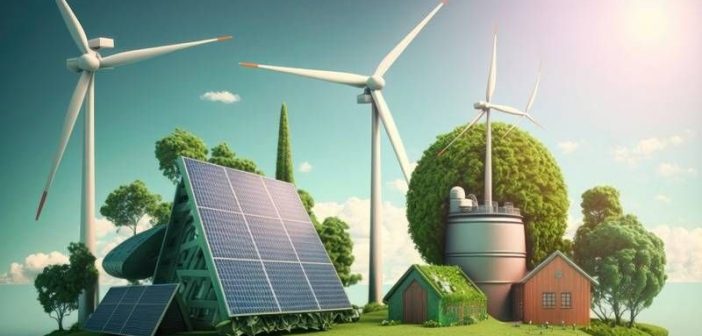India has made a remarkable achievement in its renewable energy ambitions, with the country’s total renewable energy capacity now exceeding 200 GW. Renewable energy currently comprises more than 46.3% of the country’s installed electricity generation capacity, highlighting India’s robust progress toward its goal of a sustainable, low-carbon future. This milestone aligns with India’s target of reaching 500 GW from non-fossil sources by 2030, underscoring the nation’s commitment to clean energy and reduced reliance on fossil fuels.
According to the Central Electricity Authority, India’s renewable energy-based electricity generation capacity reached 203.18 GW as of October 2024, up 13.5% from the previous year. Including nuclear energy, the total non-fossil capacity now stands at 211.36 GW. Solar power leads with 92.12 GW, followed by wind power at 47.72 GW, large hydro projects at 46.93 GW, and smaller hydro sources and bioenergy combining to diversify India’s clean energy mix. Collectively, these developments contribute to energy security, reduce fossil fuel dependence, and fortify India’s leadership on the global stage.
Job Creation and Economic Benefits
The renewable energy sector’s growth has significantly boosted employment. In 2023 alone, India’s clean energy industry generated over 1 million jobs. Hydropower emerged as the largest employment sector, with solar PV following closely. Together, these sectors not only contribute to the economy but also establish India as a leader in sustainable employment, as shown by the recent IRENA and ILO report highlighting India’s role in the global renewable workforce.
Strategic Path for a Sustainable Future
India has committed to reducing its emissions intensity by 45% by 2030 and achieving 50% of its cumulative electric power from non-fossil sources. States like Rajasthan, Gujarat, Tamil Nadu, and Karnataka have been instrumental, each establishing substantial renewable energy capacities that drive national targets. The government is also encouraging innovation and infrastructure development through initiatives like the National Green Hydrogen Mission, PM-KUSUM, and the PLI scheme for solar modules.
Conclusion
India’s renewable energy milestone of over 200 GW symbolizes the country’s determination to foster a green economy, improve energy security, and mitigate climate change. With strategic investments and a vision aligned with the Paris Agreement, India is not only meeting its energy needs but also setting an example for sustainable development worldwide.





